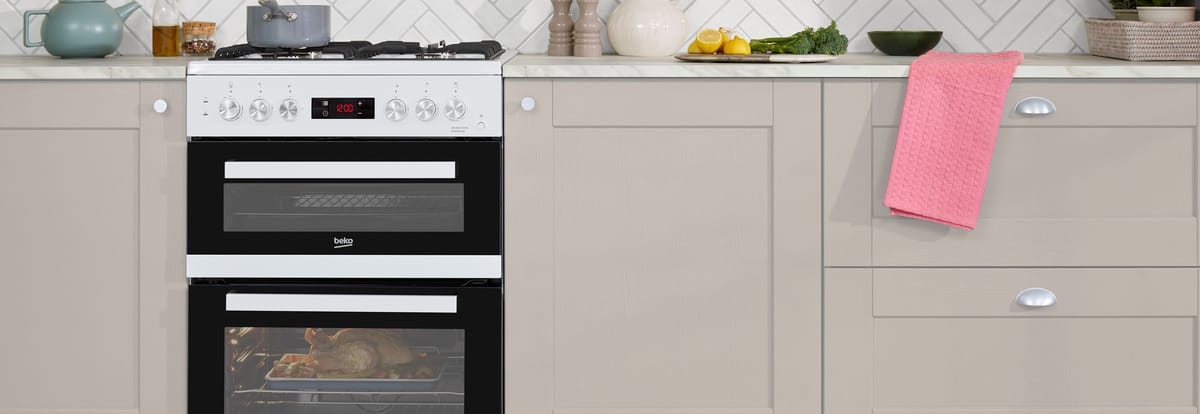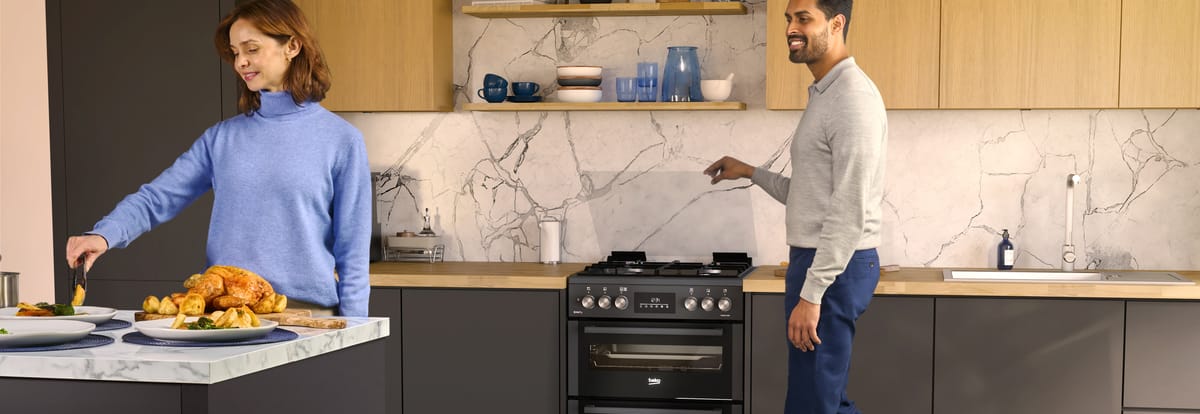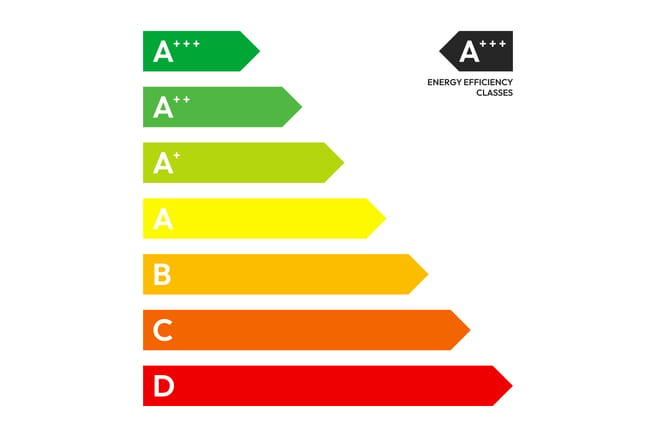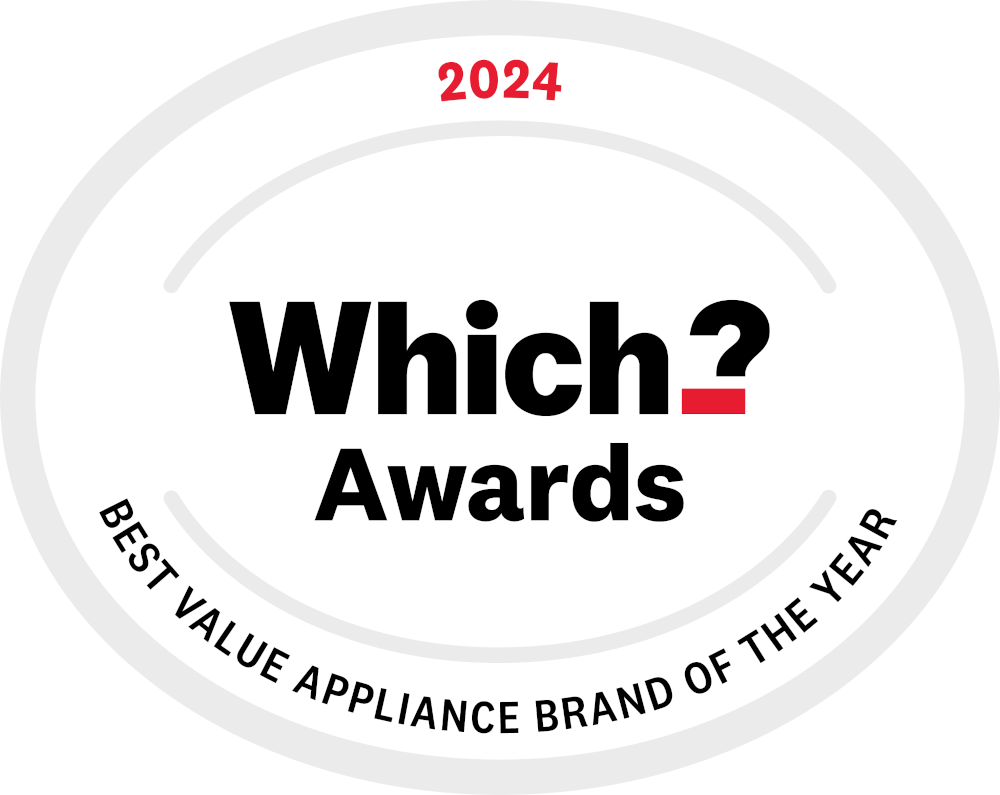What is a Dual Fuel Cooker?

If you are looking for a versatile kitchen cooking appliance, then a freestanding dual fuel cooker may be the perfect fit for you – find out why in our handy guide.
By combining the strengths of both gas and electric cooking, it allows the user to enjoy the benefits of both fuel types, making for a more pleasant experience.
Versatility from Both Gas and Electric Cooking
Dual cookers offer the best of both cooking methods and allows users to take advantage of a gas hob and electric oven.
Gas burners are a favourite for many cooking enthusiasts with their ability to provide an immediate flame, and their instant heat adjustments also being a major benefit. The speed and ease of this is useful for quickly bringing water to a boil, or searing meat before you go on to make a stew in the oven, as just two examples.
The ability to see the flame makes it easier to assess the heat level that the hob is currently operating at, meaning it is more straightforward to judge cooking times and avoid food spoiling through overcooking and/or burning.
Even heat distribution is just one benefit of the electric oven that makes them a staple in many kitchens across the globe. The regulated heat means you are far more likely to find that your food is cooking in accordance with the time you were expecting before you set it to bake or roast. Electric ovens are also the best option for temperature stability as you should experience no fluctuations in heat, other than in the short time when you are opening the door.
There are varying benefits of the dual fuel cooker, and by combining gas hobs and electric ovens, the appliance takes advantage of the immediate responsiveness and quickly achieved optimal heat of gas cooking, and the precision and consistency of electric cooking.
However, there are drawbacks when it comes to energy efficiency. Electric hobs, particularly induction models, are significantly more energy-efficient than gas hobs. This means that the carbon footprint of using a gas hob is substantially higher compared to an electric, and especially an induction hob. However, this does not necessarily translate to energy cost savings, as gas is generally much cheaper, offsetting the additional energy consumption of a gas hob.
Enhanced Cooking Performance

If you are looking for greater flexibility from your kitchen cooking appliances, then the dual fuel cooker is most likely a great option for you.
Using an electric oven and gas burner allows for the more complex meals and the different ingredients that go into them to be cooked simultaneously.
Select Beko freestanding dual fuel cookers now feature AeroPerfect™ technology, which uses a continuous stream of airflow to minimise temperature fluctuations, ensuring fast and even cooking every time. The 60cm Double Oven Dual Fuel Cooker FDDA6272TCv also includes AirFry technology. By combining a specially designed AirFry tray with AeroPerfect™'s unique hot air distribution, this cooker doubles as an air fryer, delivering crispy-on-the-outside, soft-on-the-inside results with minimal oil. Fan-assisted or convection cooking features are also a benefit of dual fuel cookers and are particularly beneficial for the likes of batch baking, or roasting a full chicken, due to its ability to limit cooking hot spots and allow for a more even cooking.
Energy Consumption

The energy rating label on a freestanding cooker provides the energy consumption and energy efficiency class of the oven on the cooker. For cookers with multiple oven cavities, there may be separate labels for each cavity. The energy efficiency class ranges from D to A+++, with A+++ being the most efficient. To save energy and reduce costs, consumers should prioritise cookers with higher energy ratings.
For the hob section of the cooker, there is no energy label to guide consumers on efficiency. However, as a general rule, gas models are the least energy-efficient option. For those looking to save energy, particularly if the hob is frequently used, an induction hob is a better choice. This is especially important for environmentally conscious consumers, as electric hobs—particularly induction models—produce significantly lower carbon emissions during use compared to gas hobs. However, it’s worth noting that this will not result in cost savings, as the lower price of gas often offsets the higher energy consumption of a gas hob.
Even Heat Distribution for Perfect Results
Ensuring that the food you are cooking has received a consistent temperature is pivotal for the outcome of a meal and is a major consideration for anyone in the market for a new cooking appliance.
The dual fuel cooker features convection fan benefits that allow for a more even circulation of air, whilst gas burners will provide you with a consistent and stable temperature when using your pots and pans to cook.
Durability and Longevity
Dual fuel cookers, just like other appliances are built with durability in mind and offer long-term value to consumers.
Beko freestanding dual fuel cookers feature catalytic liners and SimplySteam™ technology, which help to simplify cleaning. Just pour water into the tray, and as it evaporates, the steam loosens burnt-on food and grease, making it easier to wipe away.
Their robust construction using the very best materials make them a brilliant asset to the kitchen of cooking enthusiasts.
Space and Design Considerations
Before you purchase a dual fuel cooker it is pivotal that you check not only whether the appliance will fit into your kitchen layout, but also whether it will match the overall theme and design of your kitchen.
To be sure you are purchasing an appliance that matches your space, you should measure the area set aside for the cooker and be sure that you account for any clearance requirements. Beko dual fuel cookers are 90cm high, 60cm wide and 60cm deep.
If you are someone who regularly entertains a large number of guests then you may want to consider a dual fuel range cooker for additional hob and oven space.
Choosing the Right Dual Fuel Cooker
When selecting the right dual fuel cooker for you there are certain features that are important to consider.
We have already discussed the size of the appliance, and the necessity for this to fit your space, but you also need to choose a cooker that matches the aesthetics of your kitchen.
If you have certain requirements such as the dual fuel cooker having a conventional oven setting, self-cleaning features or programmable timing, be certain the product you are about to purchase matches each of the things on your checklist.
However, if energy efficiency is a priority, you may want to consider a fully electric cooker, particularly one equipped with an induction hob, as it offers superior energy performance which translates into lower carbon emissions when in use.
FAQs
What are the advantages of using a dual fuel cooker?
The advantages of a dual fuel cooker are undoubtedly its versatility, ability to control precise heat control on the gas hob, and the even cooking from an electric oven.
Are dual fuel cookers energy-efficient?
Dual fuel cookers can be energy-efficient if they feature an oven with a high energy rating (A+++), but their gas hobs are less efficient compared to electric or induction hobs.
Can I install a dual fuel cooker myself?
A gas safe engineer will need to install your gas connection and a qualified electrician will need to hardwire the oven.
How do I maintain a dual fuel cooker?
Implementing a regular cleaning schedule is a huge benefit for the maintenance of your dual fuel cooker. Be sure to clean down your work surfaces and remove any food spills from the outside and/or inside of the appliance. Refer to our Oven Cleaning Guide for oven cleaning tips.
Did we answer your question?
We are so sorry we were unable to answer your question. You might be able to find the answer you are looking for in the ‘Related Questions’ below. If your query is still unanswered, please head over to our Contact Us page for further assistance.
Search FAQ’s
Search or browse our frequently asked questions to find the answer to your query.




